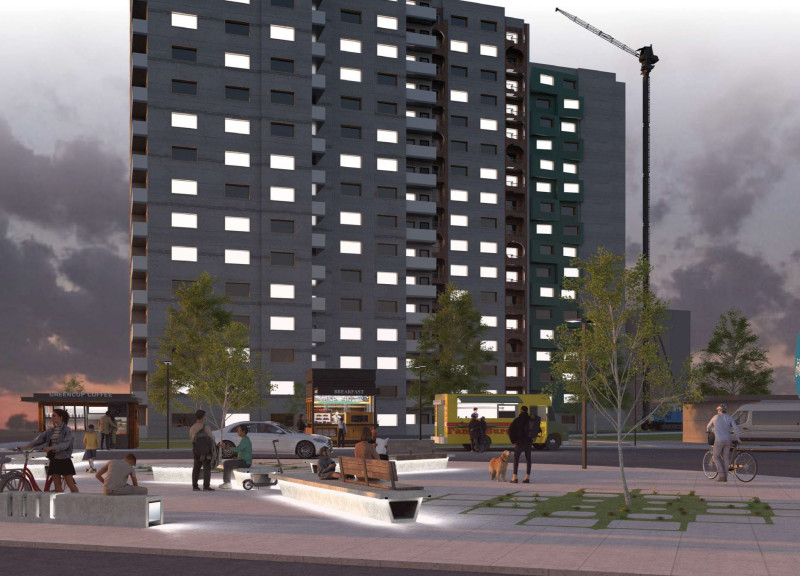5 key facts about this project
At its core, the design embodies the philosophy of [specific design philosophy], where every element is meticulously planned to enhance the user experience. This approach is evident in the layout, which promotes fluid movement between spaces while ensuring that each area serves its intended purpose effectively. The careful arrangement of rooms and communal areas encourages social interaction and fosters a sense of community, making it a welcoming environment for its occupants.
The materiality of the project further reinforces its design intent. The use of concrete delivers robustness and longevity, ensuring that the structure can withstand the tests of time. Large sections of glass are strategically integrated to invite natural light indoors, effectively blurring the boundaries between interior and exterior spaces. This transparency not only enhances the aesthetic appeal but also contributes to the building’s energy efficiency by reducing reliance on artificial lighting. Steel is employed in structural elements, providing support while allowing for expansive open floor plans that facilitate a versatile use of space. Additional materials such as wood and brick are incorporated thoughtfully, enhancing warmth and texture, while also grounding the design in the local context.
Unique design approaches are prevalent throughout the project. Notably, the incorporation of [describe unique features, such as green roofs, rainwater harvesting systems, or innovative energy solutions] demonstrates a commitment to sustainability and environmental stewardship. These features not only reduce the ecological footprint of the building but also promote a deeper connection between the occupants and their surrounding landscape. This emphasis on nature is further emphasized in the project’s landscape architecture, where outdoor spaces are designed to be extensions of the indoor environment, encouraging residents to engage with nature on a daily basis.
The façade of the building is a significant design characteristic that encapsulates the project's identity. The composition of materials and forms communicates a modern aesthetic, while thoughtful detailing adds layers of interest. The design integrates elements that reflect the cultural heritage of the area, paying homage to traditional architectural styles without compromising modern functionality.
The architectural design of [Project Name] extends beyond mere aesthetics; it is a reflection of contemporary living and social dynamics. The project addresses the need for practical, adaptable spaces while considering the evolving demands of its users and the wider community.
For readers eager to dive deeper into the intricacies of this architectural endeavor, it is beneficial to explore the architectural plans, sections, and detailed design elements available in the project presentation. These resources will provide comprehensive insights into the thoughtful decisions made throughout the design process and illustrate how this project successfully melds form and function in an engaging manner. Exploring these architectural ideas will enhance one's appreciation and understanding of the project as a significant contribution to the architectural landscape in [Geographical Location].


 Martina Bacarella
Martina Bacarella 























